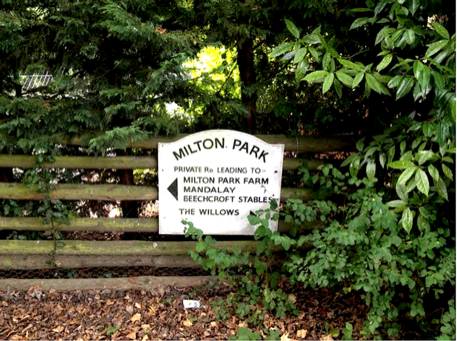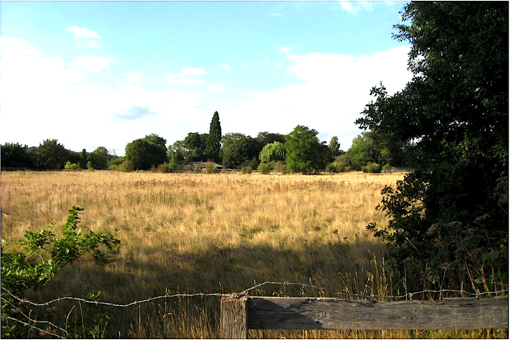



Gravel Extraction R.A.G.E.
–
NB. These are not official Minutes of the meeting
Present: Joseph Baum and David Shetcliffe (Curtin&Co); Helen Hudson and Mark Kelly (CEMEX); Chris Fisher (ERA); Moreton Moore (RAGE); and Runnymede Cllrs Alan Alderson and Brian Clarke. Cllr Isabel Mullens also attended as an observer.
1. Why is your proposal coming forward now?
CEMEX has been patiently waiting for SCC to determine Hanson’s 2009 application to dig Milton Park Farm (MPF). The delay in granting permission for MPF seems to have been caused by a dewatering issue with the Environment Agency. The MPF application is for a ‘dry’ operation, requiring the insertion of bentonite clay walls around the working site, and pumping water out. This could increase the risk of local flooding. The problem of the high water-table has to be addressed by an Environmental Impact Assessment (EIA).
The SCC Minerals Plan states that Whitehall Farm (WF) and Milton Park Farm (MPF) should not be worked at the same time. If WF were granted permission, then would MPF be delayed still further?CEMEX could not answer for Hanson
2. If your planning application for WF were to be granted by Surrey County Council (SCC), when would you start? 2023
3. How long would the whole quarrying and restoration operation last? 1 year preparing the site, 5 years quarrying it and 2 years restoring it = 8 years – Will there be a deadline for finishing? Not all the 1.4 million tons of sand and gravel would be excavated. A ‘stand-off’ (or ‘buffer’) of an unworked perimeter strip would shield some adjacent residential properties and would reduce the quantity of material quarried to 1.0 million tons.
4. Wet working – Reduced risk of flooding
Residents note, with relief, that (if granted) CEMEX would work WF ‘wet’. We understand that this mode of operation would not increase the risk of flooding in the Egham/Stroude locality – And furthermore, it could reduce the risk of flooding.
5. Wet working – Reduced air pollution
We also understand that this mode, compared with a ‘dry’ operation, would produce far fewer airborne particles/dust.
6. Restoration
Regarding eventual restoration, we asked if it would be possible to leave WF, or at least part of it, as a lake (or as a series of small lakes). We had in mind a possible benefit to local residents, in respect of a significant reduction in flooding risk, in perpetuity. This request was countered by the ‘birdstrike’ argument: open water near Heathrow Airport can attract birds which could cause serious damage and loss of human life if one flew into an aircraft engine. CEMEX is in contact with advisers from the RSPB and are intending to restore the site in such a way that there would be a gain in biodiversity. We pointed out that there could be a problem of obtaining suitable inert material for back-filling. Apparently, this is not so: clay from building sites can be used. (We were wrong to think that inert material was composed mainly of old bricks and crushed concrete. These materials are re-used.) Nevertheless, restoration with inert fill can cause problems by impeding the flow of groundwater; and predicting the change in water level from computer models can be difficult.
7. Access
The proposed access/egress point would be in Stroude Road at Luddington Farm.
8. Haulage route
The proposed haulage route from WF to the major roads would involve a left-turn out of the site on to Stroude Road, past Great Fosters, a right-turn into New Wickham Lane over the M25 Motorway; and then either (a) a left turn (northwards) into Vicarage Road, over the level-crossing and a right turn at the former Police Station into The Avenue, or (b) a right-turn (southwards) into Thorpe Lea Road towards Chertsey. More lorries would turn north than south. The lorries would keep to these designated routes by a Section 106 Agreement. (These HGVs would be going to CEMEX Concreting Plants at Chiswick, Fulham or Wembley.) Other possible haulage routes were discussed, including the Thorpe By-Pass route. CEMEX will consider these suggestions.
9. Lorry movements
There would be 78 return journeys per day = 156 lorry movements. These HGVs are 20-tonne lorries. Note: There would be far fewer lorry movements if the import of inert waste were not needed.
10. Rail option
Although some larger CEMEX sites have rail access, WF is too small for a railway sidings.
11. Hours of working
The hours of working would be 7 a.m. – 6 p.m. Mon – Fri; and 7 a.m. – 1 p.m. on Saturdays. In the winter hours of darkness (early morning or late afternoon), maintenance would be carried out. There would be no working on Sundays or on Bank Holidays.
12. Noise
Noise at residential dwellings would be reduced by bunds.
13. Processing plant
The processing plant would be located near the railway line; and is basically a giant sieve, washing the excavated material on screens to produce a variety of products of various particle sizes (as well as silt).
14. Vibration
As there would be no explosive blasting, vibration should not be a problem for the stability of nearby buildings.
15. Visual intrusion
There could be some visual intrusion of structures 12 metres high.
16. Monitoring
We assume that SCC will monitor the whole operation, from start to finish.
Moreton Moore 22 October 2020

If you move the cursor down the viewable pdf. The toolbar becomes visible. To download the notes click on the down arrow and the notes will appear in your downloads folder
CEMEX – Whitehall Farm (WF)
NOTES FROM A MEETING WITH CEMEX
20 OCTOBER 2020